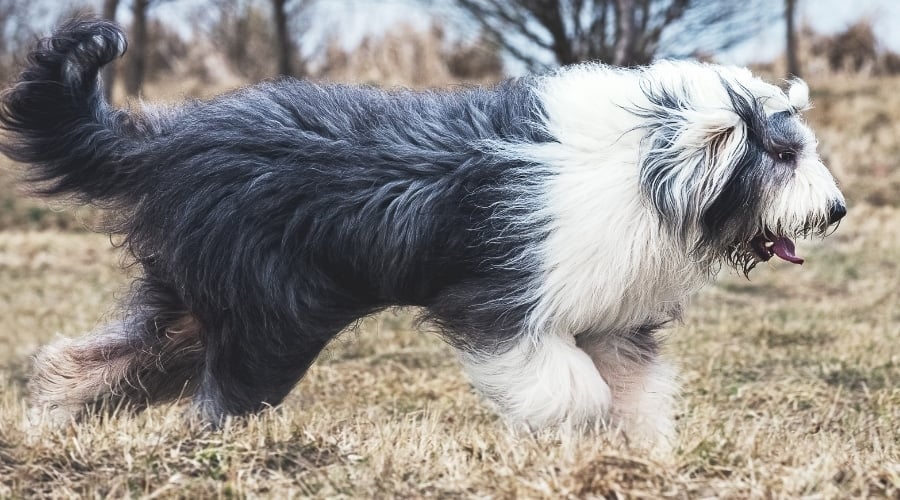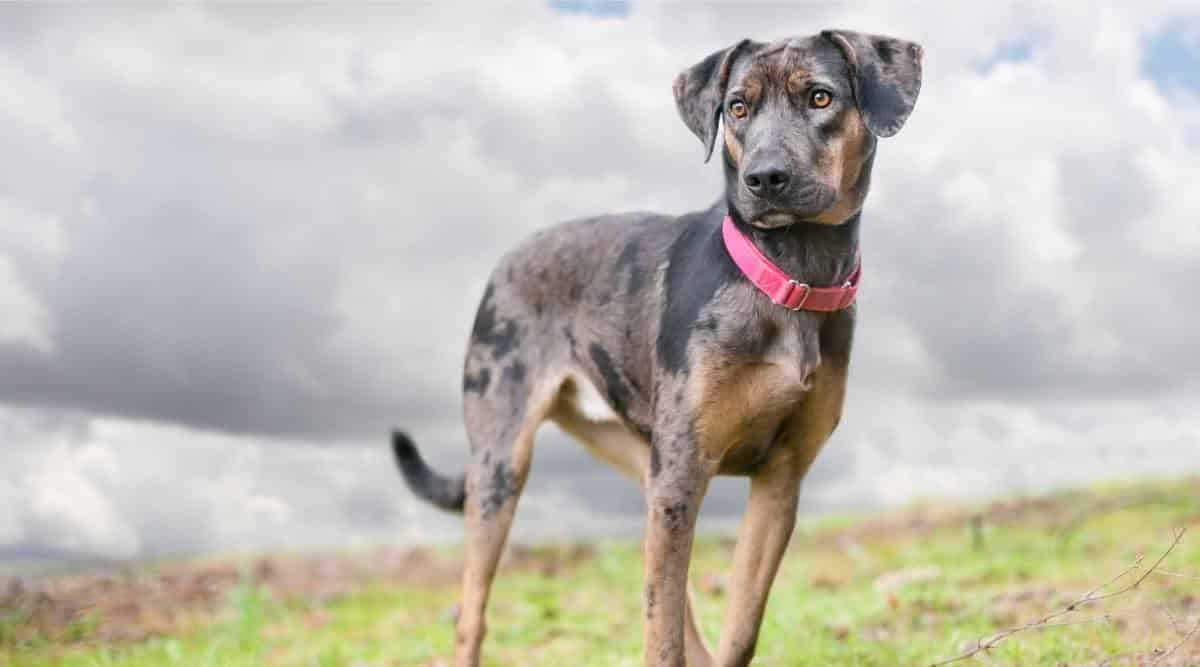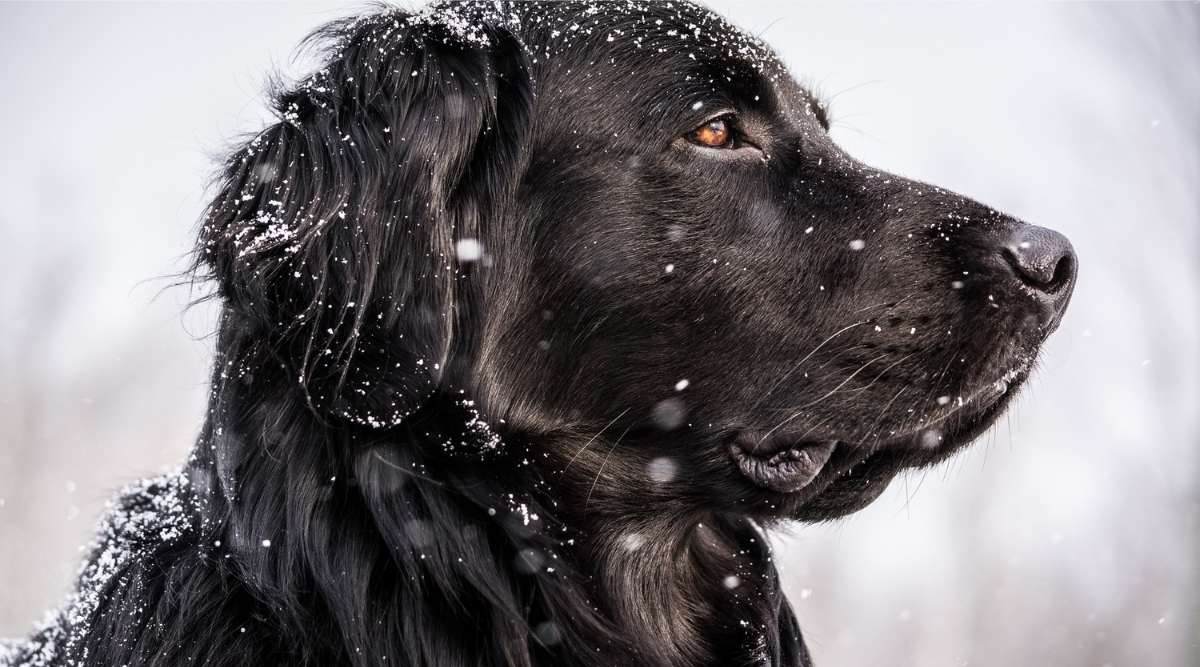Rottweiler Siberian Husky Mix: Rottsky Facts & Breed Information
When you purchase through links on our site, we may earn a commission. Here’s how it works.
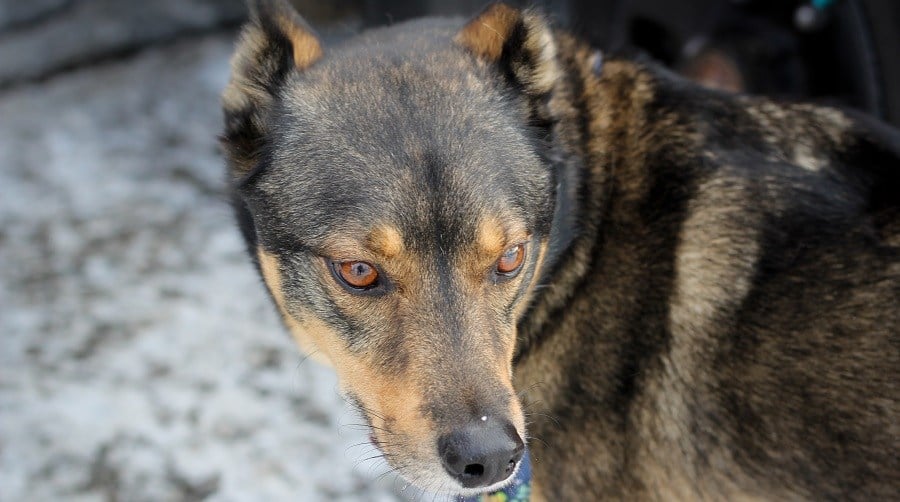
The Rottweiler and the Siberian Husky mix is not necessarily a mix that would seem compatible with their differing personalities, but it is a mix that works very well indeed! This relatively new designer dog is strikingly beautiful, and he has a personality to match.
Table of Contents
He is a seriously sociable pup with his immediate family, who has the potential to either extend this sociability to strangers or be molded into a guard dog with his Rottweiler’s innate protection traits.
The biggest factor to consider regarding the Husky Rottweiler mix is the sheer amount of exercise that he needs, so if you can provide this, then you have a winning companion. Sit back, and let’s get to know the one and only Rottsky.
Parent Breeds
In order to understand the Rottsky, it is important to gain insight into both of his parents and where he came from.
The Rottweiler Siberian Husky mix is a designer dog that is also called the Rottsky. The term refers to the purposeful mixing of two purebred dogs in the hope of creating a perfect pup, which is slightly different from the concept of a “mutt” or “mongrel.”
Although a handful of purebred crusaders fundamentally disagree with the idea of crossbreeding designer dogs, it is scientifically proven to have health benefits, and so as long as the puppy is healthy, it can only be a good thing. It also allows families who are torn between two breeds to combine their appearances and traits to achieve the best of both worlds in one pooch, like the Rottweiler Husky mix.
Rottweiler

The Rottweiler is one of the oldest dog breeds, and he is believed to have descended from Mastiff-type dogs in the Roman era. He was originally engineered to herd and protect the army’s cattle from wild animals and robbers. The butchers of Rottweil in Germany were so impressed with his guarding abilities that they used him to protect their hard-earned money. He was officially named after the town of Rottweil.
Over time, he found other forms of employment on farms for his sheer power in shifting large, heavy objects and in many protection services, such as a German police dog for a time. Since his decline in popularity as a working dog, thanks to other breeds, his sweeter side has been discovered, and he is now considered a great family pet. In 2023, the American Kennel Club (AKC) ranked him as the ninth most popular dog in America out of a whopping 200 recognized breeds.
Rottweilers are often described as loyal, loving, and confident guardians. He, of course, makes a good guard dog, thanks to natural protection instincts, and as such, he needs early training and a firm master who is not going to let him rule the roost. When he is not on guard duty, he is affectionate to his immediate family.
The Rottie is often mixed with other breeds, creating designer dogs like the Labrador Rottweiler mix, the Shepweiler, or the Pitweiler.
Siberian Husky
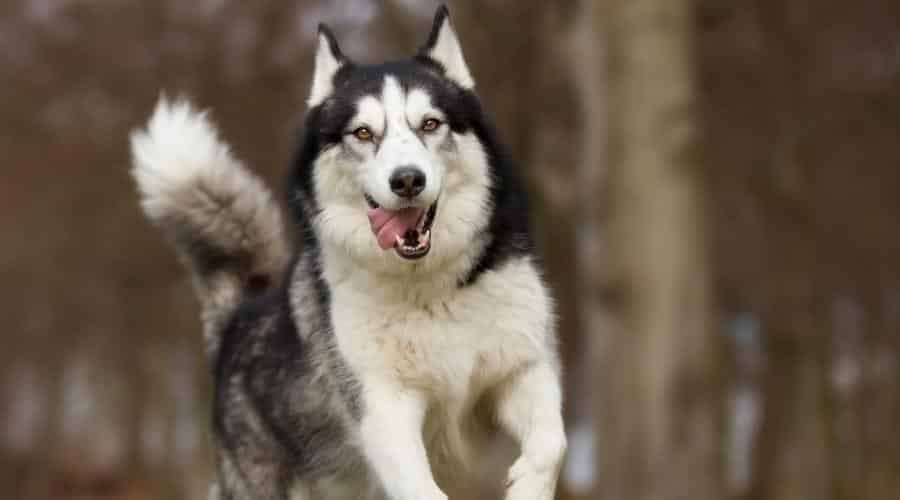
The Siberian Husky is also an ancient dog breed developed to haul light deliveries on sleds over large areas of icy land with great speed. Their energy, speed, and stamina were superior, but it was not until 1925 that they became well known.
Not only is the Husky still used as a working dog, but he is also famously known as a main tourist attraction in Lapland. He is still equally loved for his companionship and ability to be a beloved family pet. In 2023, the AKC ranked the Husky as the 24th most popular breed.
The AKC describes the Husky as a loyal, outgoing, and mischievous pup. He is an intensely energetic dog who can become destructive and unhappy if he is not exercised adequately. He is a silly pup who loves to chat with his family, and there is always fun to be had with a Husky in the mix.
Because Huskies are so popular as family pets, they are also often crossed with other breeds to create breeds like the Border Husky, the Husky Golden Retriever mix, or even the Pug Husky crossbreed.
Meet The Rottsky
The Rottsky inherits a mixture of his parents’ appearance and personality traits. They are quite different in both their looks and temperament, so it really is a lottery when it comes to what genes the Rottsky inherits. His parents are both medium to large dogs who are extremely gentle and loving with their immediate family. They are fun-loving pups who love to get involved in all the family fun.
There are also some differences between them, and as such, you should know that no personality trait can be guaranteed. The Rottweiler, with his natural guarding instincts, makes a much better guard dog than the Husky, who wants to be everyone’s best friend. While this is suited to some families, it is not suited to all, and you should expect your Rottweiler Husky mix to inherit either one of these two different extremes.
So, let’s examine the finer details to see if the Rottsky is a pooch that suits you and your lifestyle.
Temperament
Rottskys are usually highly active and very friendly dogs. Expect a very loyal, attached, and stubborn pooch. They love people and children, but due to their big size and high energy, they are better for older kids. Rottskys make very devoted companions and are highly protective. That said, they are often stubborn, with a mischievous or independent streak.
Rottskys get along with other dogs, but male pups can be territorial. They may also like to chase smaller pets like cats. These pups also do not like to be left alone for long periods of time and can develop separation anxiety. Be ready for a handful of love, attention, and dog energy.
Size & Appearance
A full-grown male and female Rottsky measures between 21 and 26 inches from paw to shoulder and weighs between 55 and 95 pounds. The Rottsky, similar to most other hybrid dog breeds, tends to look more like one parent, with only a few traits of the other. It is generally uncommon for most hybrid dogs to be an equally split mixture of their parent’s features.
Commonly, they have the head of the Rottweiler with the eyes of the Husky, be that bright blue colors or heterochromatic eyes. Both of his parents have large triangle ears that either drop down or stand erect, so the Rottsky can have either of those. Overall, the Rottsky retains much of the wild, wolfy look inherited from his Husky parent.
Coat & Colors
Though both of his parents have a double coat, they have very different outer coats. The Rottsky typically has a fluffy outer coat similar to his Husky parent but a little shorter and smoother like his Rottweiler parent. He also commonly takes the Rottweiler’s black and tan colors with his distinctive eyebrow markings. However, his coat can also take gray, red, brown, cream, white, and sable colors.
Exercise Requirements & Living Conditions
The Rottweiler is a medium-energy dog that needs around 60 minutes of exercise a day, compared to the Husky, which is an intensely energetic dog that requires at least 90 minutes a day. While there is a chance that Rottsky can inherit the Rottweiler’s energy levels, he is more likely to take after the Husky’s energy levels. The Husky’s intense energy levels are so strong that most Husky mixes take after their Husky parent. For this reason, you should expect the Rottsky to require up to an hour and a half of exercise every day to be on the safe side.
While the Rottweiler needs much less exercise than the Husky, they are both equally as destructive as one another if they are not given the exercise that they need. For this reason, you can expect the Rottsky to be exactly the same, if not twice as bad. Not only does he have a lot of pent-up energy, but he’s also a powerful dog, just like his parents, and he can destroy a room in minutes. So, unless redecorating on a monthly basis is a pastime of yours, you should not get a Rottsky unless you can guarantee that he gets an adequate amount of exercise every day.
Don’t Forget To Exercise Your Pup’s Brain
As both his parents are very energetic and intelligent dogs, the Rottsky also needs mental stimulation throughout the day. Not only does this keep his mind occupied, but it helps prevent any pesky behavioral problems that might occur out of boredom. Interactive toys and games such as playing tug-of-war in the garden or playing fetch not only keep him busy, but they are also a bonding session for you and your pup.
Additionally, as a medium-to-large dog, the Rottsky needs plenty of space to live, and as such, he doesn’t do well living in an apartment. The Rottsky must have access to a backyard, both for fresh air so as not to get cabin fever and to stretch his legs in between his intense exercise sessions.
Training
You may be wondering, “Are Rottsys hard to train?” As with any other characteristic of a hybrid dog, this depends on their genetics and unique personality. The Rottsky is an intelligent pup who can learn tricks very quickly. However, if he is having a stubborn day, then he may also be very quick to forget them if he doesn’t feel up to it. Because of the Rottsky’s independence and stubbornness, it is important to start obedience training from a very early age to establish the ground rules and so that he knows who the pack leader is. This is particularly important if the Rottsky inherits his Rottweiler parent’s temperament.
Additionally, and for this very reason, it is also imperative to socialize your Rottweiler Husky mix puppy at a very early age, simply because of his potentially heightened guarding tendencies. Socialization is the process of teaching the pup to be comfortable in many different environments, both inside and outside of the home.
Any type of training should be positive, not negative. Otherwise, there is a chance that he may react negatively or aggressively, and with the Rottsky’s size and power, this is something to be avoided at all costs. Due to the Husky’s independent streak, training for your mixed pup may be challenging. You may need to consider professional training or an online dog training course to give you guidance.
It is important to set behavior expectations and boundaries and reinforce them. Those Husky genes can be strong, so training is not just something to do when they are puppies. It’s a lifelong effort to train your pooch to behave appropriately in different situations.
Health
The Rottsky is a generally healthy dog whose lifespan is around 8 to 14 years. This wide age gap is due to the fact that the Rottsky is a relatively new hybrid dog with only a small gene pool and only a few generations to take generalized information from, and as such, it covers the lifespan of both the Rottweiler and the Siberian Husky. The Husky is the healthier parent compared to the Rottweiler. However, it would be wise for any prospective Rottsky owner to make themselves aware of both parents’ health concerns in order to prepare for any eventuality.
The Rottweiler is known to suffer from hip and elbow dysplasia, which is the abnormal formation of the stated joints. Rottweilers are known to suffer from dilated cardiomyopathy, which is when the puppy is born with thinner heart walls, which means that the heart does not function as it should and can result in heart failure. They are also known to suffer from subvalvular aortic stenosis (SAS), which is where the area underneath the stated heart valve is blocked, which can stop the flow of blood.
The Siberian Husky is known to suffer from hip dysplasia and several eye conditions. Both parent breeds are similarly disposed to bloat, which is a serious life-threatening condition that is characterized by their stomach twisting after a period of intense exercise.
Consider pet insurance for your pup to help extend their lifespan as much as possible by getting vet care when needed without stressing about the cost. Insurance cannot directly increase your pup’s lifespan, but insured dogs often live longer because their owners take them to the vet when something pops up, which allows vets to diagnose and address a condition sooner. Read our pet insurance reviews to learn more.
Nutrition
The Rottsky consumes between 2 ½ and 3 cups of food a day, and this depends entirely on their size and energy levels. The best, and often easiest, way of keeping your pup healthy is to feed him the best nutrients possible by feeding him high-quality kibble. Along with kibble, mix in wet and fresh dog foods. These help provide your pooch with balanced nutrition and add flavor to his food bowl.
Age-appropriate food formulas are also pivotal to the health and development of your Husky Rottweiler mix. As a larger puppy, try to stick to large-breed puppy food. Larger breeds like the Rottsky need food with higher protein and optimized calcium, fat, Vitamin D, and phosphorus to support larger muscle mass and higher energy. These are also essential to proper bone growth and development. You must also be careful not to overfeed your pup, as this can lead to obesity, diabetes, and other health issues.
Grooming
As both of his parents have a double coat to keep them protected from the harsh cold climates of Siberia and Germany, the Rottsky may be a moderate shedder all year round. He needs a thorough brushing once a week, with a quick brushing session in between. The Husky Rottweiler mix sheds considerably during shedding season, and during this time, he should be brushed every day to keep his coat manageable.
He requires bathing once every two months to keep him clean and smelling fresh. Other grooming habits, such as nail clipping and ear cleaning, are the same as those of any other pup, and they should be completed every week or two to prevent infections.
Don’t forget to brush your pup’s teeth a few times a week. You can also use dental chews to help freshen his breath and keep his teeth clean. This is important to prevent dental disease and decay.
Breeders & Puppy Costs
The Rottsky is a relatively new breed, and there are very few breeders around. This is a big factor when it comes to the pricing of pups. The price of a Rottsky ranges on average from $600 and can reach over $2,000. If anyone is selling a pup for any less than this price, then be wary. They are likely to be an unscrupulous puppy mill breeder who is only interested in making a quick buck rather than being concerned with the puppy’s health.
Other factors, such as appearance, affect the price. The most desired look of the Rottsky is the traditional wild look of the Siberian Husky, with the Rottweiler colorings. If the Rottsky has the Husky’s bright blue eyes or even different-colored eyes, then he may be more expensive than his litter mates who do not take on this overall appearance.
Finding A Rottsky Breeder
The best way to start your search for a Rottsky breeder is to speak to Rottweiler and Siberian Husky breeders, who may know a hybrid breeder themselves, or they most likely know someone who does. The great thing about this is that reputable breeders are likely to only refer other reputable breeders. Nonetheless, it is still important to conduct your own research about them and aim to find reviews about them and their breeding practices.
Most reputable breeders should provide a health certificate regarding the Rottsky’s hip score and, at the very minimum, an ophthalmologist and cardiac evaluation.
Rescue & Shelters
As the Rottsky is a newer hybrid pup, it is very unlikely they are often in rescue shelters. If they do, they are very likely to be snapped up quickly. However, speaking to breed-specific rescue shelters of both parents increases your chances of finding a Rottsky.
As Family Pets
- The Rottsky is a very cheerful pup who brings joy to everyone in the immediate family.
- He showers everyone with love, affection, and cuddles.
- While sociable with his immediate family, he may or may not extend this to outsiders.
- If you are not seeking a guard dog, the Rottsky needs very early socialization.
- He needs training from a firm master who can teach him to accept and be friendly to everyone.
- Due to his sheer size, high energy, and strength, the Rottsky is suited to a family with older children.
- He may or may not get on with other dogs.
- The Rottsky should be placed with an active family in a larger home.
- He needs at least 90 minutes of intense exercise a day to ensure that he is happy and healthy.
- He is a moderate shedder, and as such, he is not considered to be a hypoallergenic dog.
Other Mixed Dog Breeds To Consider
If you love the idea of a Husky or Rottweiler mix but are not sure this specific blend is right for you, there are many other lovely pups to consider. Perhaps the unique Chihuahua Husky mix or the Huskydoodle better suits your lifestyle.
Why Trust Us?
Emma is a dog fanatic with over 20 years of experience and the proud mom of two rescue dogs, Bonkers and Chips. Before becoming a freelance writer specializing in canine content, she worked as a professional dog walker and sitter for many years. She has undergone various canine care courses and has looked after several breeds with different needs. Emma dedicates countless hours researching the latest pet care, health, food, and training developments to keep her two best buddies and other doggy clients as happy and healthy as possible.
